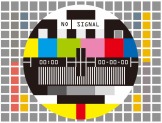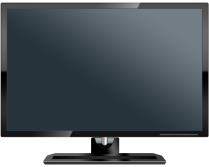Digital Signage – our journey (part 1)
January 21, 2014 1 Comment
Earlier on in the year I attended a meeting for our Havering Asks event where one of the requirements was to display streaming video on all our large display screens across the college, along with visitor information etc. Immediately I started thinking that we were going to need a new system as our existing kit wasn’t set up in a way to do this without a lot of manual work.
Fortunately the Planet eStream product that we were purchasing anyway for video resources and off-air recording had recently added digital signage to their feature set so it looked ideal for what we needed.
Once the server VM was up and running it was time to see how far we could go with customisation.
Player hardware
The eStream solution uses a Windows client application and a web browser to display signage content so the choice of hardware is down to you, the reason for Windows over Linux was down to graphics performance, which I can understand having had “fun” trying to get some chipsets performing properly on various Linux distros over the years.
So you might think this is the easy bit, you just need to throw in a PC and a screen and away you go, right? In an ideal world yes, you can buy small form factor mini PCs, brand new screens and hook them up with HDMI leads for full HD loveliness… at a cost.
Over the years we’ve gained a variety of screens from different manufacturers and model ranges and obviously they weren’t going to be thrown away. At the same time budgets are getting tighter so buying 15+ new dedicated PCs for digital signage wasn’t going to happen either. On a similar note cabling had already been run in ceilings etc for the existing screens using VGA leads and replacing everything wasn’t viable in the time frames we were working with. As a result we had to be a bit more innovative and make use of existing assets.
For the signage players we used older desktop PCs that were being replaced as part of our standard desktop refresh cycle. However on testing our the signage we noticed that graphics performance was poor, due to the onboard Intel graphics – native HD video decoding wasn’t part of the feature set until the G45 chipset and it showed).
The solution for this was to find the cheapest passively cooled graphics card we could find and try one out, this Geforce 610 did the trick nicely for £20 a piece and also included a low profile bracket in the box, perfect! There’s also similar AMD cards but I’ve never been a fan of their (often poorly coded) drivers in the past so stuck with the nVidia route in this case.
Bonus tip: nVidia driver unattended installation
When trying to get the nVidia driver to install along with the associated control panel app it consistently bombed out of the imaging process or broke the flow of sysprep autologon. As a workaround I set it to run on the first (manual) logon after sysprep using this syntax to launch the installer (it seems the installer has changed over the years and some switches you find online don’t actually work).
I also found that using the /s (silent) parameter always wants to reboot so went for passive instead that let me suppress this behaviour. The command line below will give you an unattended graphical installation with no reboot, which fits with how I wanted to run the installer in my scripts.
C:\NVIDIA\DisplayDriver\327.23\Win8_WinVista_Win7\International\setup.exe /n /passive
I also added some additional commands to my usual ZCM 11 Powershell scripting to configure static IP address settings and set up autologon. The only manual intervention was to set a few UI elements such as taskbar auto-hide that seem to be problematic to achieve via scripts \ regedit
Finally I configured the eSign client with a friendly name, server address and fixed resolution (rather than the default that goes for the highest resolution the attached screen can support).
The pain of ports and resolutions
 Having completed an audit of our existing screens in terms of model numbers, screen size etc I set about trying to find a common resolution we could use for our signage templates.
Having completed an audit of our existing screens in terms of model numbers, screen size etc I set about trying to find a common resolution we could use for our signage templates.
Initially it looked simple as they all seemed to be at least HD ready (720p) so I set the templates to 1280×720. Unfortunately this didn’t work too well as quite a few screens wouldn’t take the signal.
What I soon realised was that most TVs support the HD resolutions over HDMI or component but then give a completely different set for the VGA port! Many of the TVs seemed to be 1366×768 native panels so after trawling through manuals I managed to find the magic number that works on pretty much everything we have, 1360×768 @ 60Hz (aka WXGA)
Alternatively just buy new TVs that are full 1080p-ready and enjoy 1920×1080 over HDMI if you want the easy life 😉
With some of the basics out the way the next step was to experiment with screen layouts and design something on-brand for the college, more on that in part 2…



